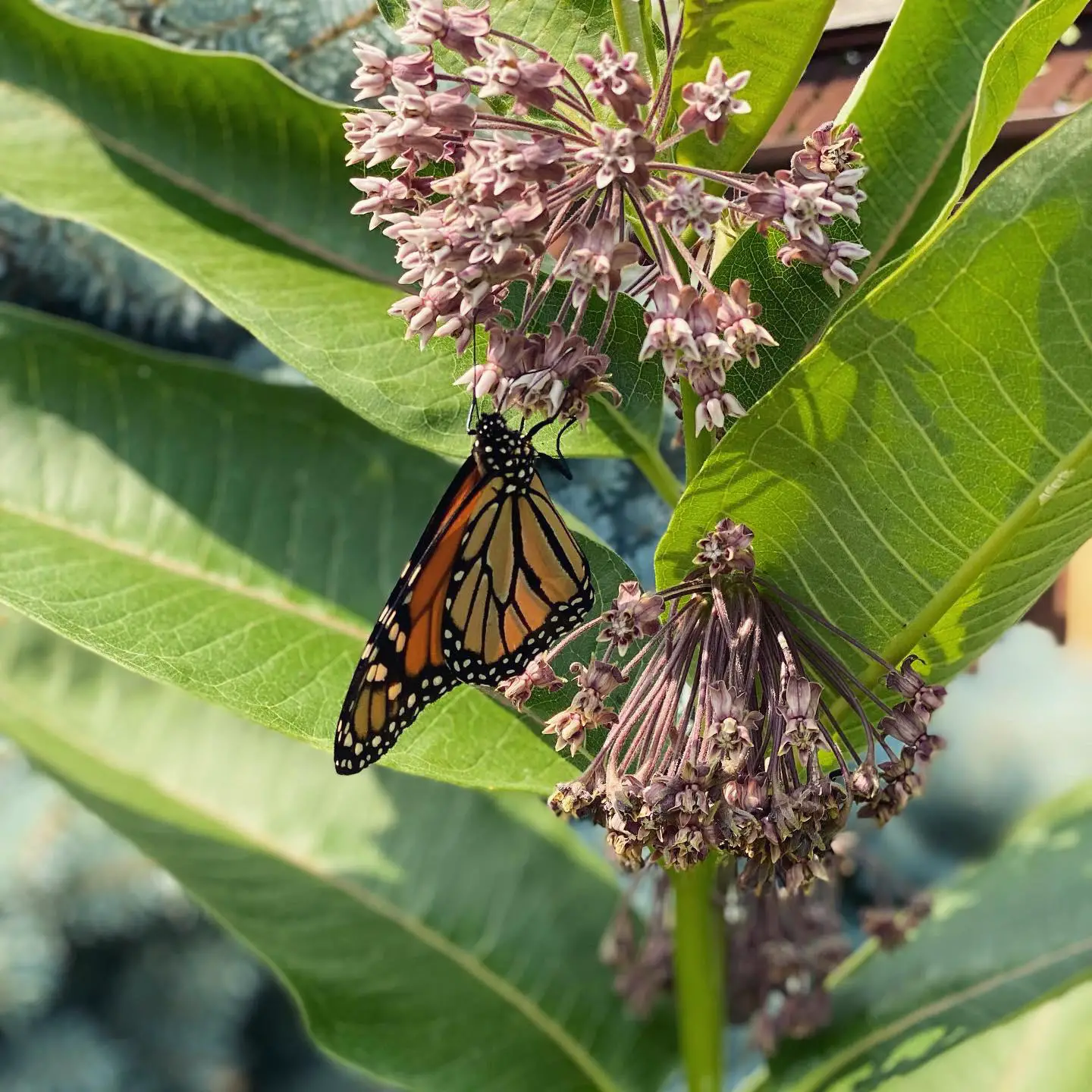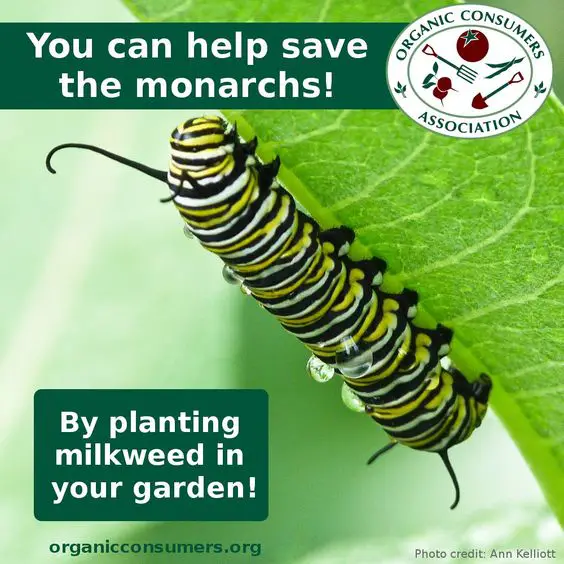Although You May Not Need To
The Spruce / Madelyn Goodnight
The large milkweed bug is a piercing insect that sucks the juices out of the leaves, stems, and seed pods of milkweed plants and dogbane plants . They are generally more of a nuisance in a garden setting rather than seriously harmful. They do not bite or sting. While they can disfigure the milkweed plants valued so much by those wishing to create a butterfly garden, they do not do any serious harm to the plants. The worst that you can say about them is that, if they show up in such massive numbers that they cover all of your milkweed plants, then they may interfere with your viewing of the monarch butterflies.
What Are The Most Common Weed Types
It really depends on the part of the country you live in and what really bugs you. For us, these are the most common types in our area:
Although, if you ask my neighbor, they might say bermuda grass and clover. We happen to love clover and dont consider it a weed .
However, you may have a whole different list for your area. The funny thing is, though, that many of the things considrered weeds are also various plants that can be used as food and medicine. Sometimes, things are worth a second look!
Which Type Of Vinegar Is Best
There are many different kinds of vinegar out there. Any kind will technically work as a weed killer, but undiluted white vinegar is most commonly used. The second most commonly used is apple cider vinegar. White vinegar is cheaper, and most people already have it on hand.
What works even better is to combine the vinegar with dish soap and salt. A possible recipe calls for one gallon of white vinegar, one cup of table salt, and one tablespoon of dishwashing soap.
Don’t Miss: What Time Of Day To Fertilize Lawn
What Not To Use: Salt
While it’s true that salt kills plants, including weeds, it also poisons the ground for many years and moves into groundwater sources after rain or watering. It’s a bad idea to use it anywhere in your yard, so steer clear of homemade weed-killer recipes that call for salt or Epsom salt, vinegar, and dish soap. Both the salts and soap are toxic to the environment and should be avoided.
Uprooting And Removing The Rhizomes

One of the ways milkweed spreads is through underground stems that form clumps above ground. So an effective way of controlling the spread of this plant would be by uprooting them completely and removing the rhizomes/stems that have formed underground.
All in all, getting rid of milkweed can be a hard and daunting task. So its important to be quite effective with the method of control you choose otherwise, the plant will just reappear again. Follow the tips in this guide, and youll be good to go.
Also Check: Where To Buy Craftsman Lawn Mower Parts
Cutting The Milkweed Down
To get rid of milkweed plants, cut their stems and dispose of these stems in trash bags since they too can propagate into new plants. Theres nothing like piling up a bunch of milkweed only to find sprouts in that very area later.
Milkweed usually spreads through underground stems, and they normally form clumps above ground. The size of the clump is usually indicative of the size of the plants root system. So if you observe a large clump, keep on coming back to cut the stem as it grows back, and eventually, the plant will die from starvation.
This will take some time, patience, and concerted effort on your part. But with some persistence this can be a way to clear an area where the plants are not wanted.
Stop Milkweed Pests From Ruining Milkweed For Monarchs
You might be familiar with the butterfly gardener catchphrase plant it and they will come. The it I am referring to is, of course, milkweedthe lifeblood of monarchs!
Milkweed comes in many sizes, flower colors, and growth habits for North American Gardens.
The good news is that monarchs will utilize many different species of milkweed to support their life cycle.
The bad news is magnificent milkweed also attracts a variety of unwanted pests.
These pests can damage the milkweed so its less appealing for the monarchs you are trying to attract and support.
In the long term, the best way to conquer milkweed pests is by diversifying your milkweed and by planting several patches around your yard and garden.
all
In the short term, a limited supply of milkweed might call for more drastic measures to take back your patch!
This is a list of all the usual suspects, and what you can do to save your milkweed for the monarchs:
Don’t Miss: Where To Buy Murray Lawn Mowers
What Are Large Milkweed Bugs
The large milkweed bug goes by the scientific name of Oncopeltus fasciatus. This flying, migratory bug is a member of the Lygaeidae family . It is a true bug, meaning it belongs to the order, Hemiptera. Members of the Hemiptera order lack mouths with which to do their eating instead, they have a proboscis. This proboscis is a long beak that they stick into the plant part that they are dining on to extract fluids from it.
Since, like the monarch butterfly, this bug is drawn to milkweed plants, a comparison is in order. Both of the monarch and milkweed bug gain protection from predators via the milky sap of the milkweed plant parts that they eat. This makes them poisonous to most predators, so they are generally left alone. Both are also black and orange, a coloration that warns predators ahead of time that they will not be tasty morsels.
How To Get Ready
According tot he University of California, start by putting on gloves and head out to the offending milkweed plants with your pruning saw and trash bag. Grasp the first milkweed plant by the stem about a foot off the ground. Cut through the stem with your hand saw below where you’re holding it. Leave enough stem sticking out of the ground so that you can get a strong grip on the remaining stem.
Don’t Miss: Should You Water Your Lawn Every Day
How Do You Kill Honeyvine Milkweed
When you try to pull or dig these vines, youll find a deep taproot with many side shoots. The roots are also brittle and break easily. Any pieces left behind in the soil will grow a new vine. The best control is a systemic herbicide, such as Roundup®, that will kill roots and all.
How do you get rid of invasive milkweed?
If common milkweed is growing in a garden area without lawn, kill it by thoroughly spraying the leaves with a ready-to-use herbicide containing glyphosate. Keep in mind glyphosate kills any plant it comes in contact with, including flowering plants, shrubs and grass, and can harm butterflies feeding on sprayed plants.
What herbicide kills milkweed?
Glyphosate is the most common herbicide used to eradicate milkweed. Application after the plant has budded and before it has bloomed is most effective. Other herbicides, such as picloram, are effective as well, but are not approved for use in all states.
How do I get rid of milkweed naturally?
Cut down all the milkweed stems growing nearby and dispose of the stems in trash bags. Milkweed spreads through underground stems and tend to form clumps above ground. The size of the clump you remove is a good indicator of the size of the plants root system.
What does honeyvine milkweed look like?
Mowing Before The Seed Pods Form
Milkweed produces seed pods that split open and spew seeds everywhere in the late summer or fall. One way of getting rid of milkweed is to mow it down every 2-3 weeks before the seed pods begin forming.
In this method, always make sure that no seed pods fall on the ground where they can sprout into new plants. A bagger mower is a good option for this as well as using blowers and rakes to clear the area.
Remember that this will need to be done regularly until the root system below ground withers and can no longer produce additional stalks. Once stems no longer sprout from the area it is safe to assume that you have killed off the roots without having to resort to a chemical solution.
Don’t Miss: How To Compact Soil For Lawn
Pull Weeds From The Ground
Grasp one of the stems near the outside edge of the clump and begin pulling on it with steady pressure using your nondominant hand. Use your hand trowel to loosen the soil around the cut stem so that the roots pull free without breaking. Lift the stem and the roots attached to it out of the ground and repeat this process for each stem. Pull up as much of the root system attached to each cut stem as possible and dispose of the stems and roots in the trash bags.
Final Touches To How To Get Rid Of Milkweed

Here is a rundown of the 12 ways we have just went over to help control the growth and spread of milkweed in your lawn, beds, garden, or property.
Also Check: Do Not Poop On Lawn Signs
Where Do Large Milkweed Bugs Live
The large milkweed bug can be found throughout most of North America and Central America. It frequents patches of ground that have been disturbed by humans in one way or another, including roadsides, home landscapes, and pastured land grazed by livestock. Such areas often contain the Asclepias plant species that large milkweed bugs feed on, as do the wild meadows that they also live in. These species include:
- Sandhill milkweed
How To Kill Milkweeds
Related Articles
Milkweed plants are known for their puffy flowers and long stalks and for the fact that mowing pasture to control weeds in this family will not work. Milkweed species such as Mexican whorled milkweed and showy milkweed are considered invasive in some areas. They can regrow from chunks of root left in the ground and are resistant to most herbicides. These perennial weeds are often difficult to kill, but it’s not an impossible task. Mexican whorled milkweed grows in U.S. Department of Agriculture hardiness zones 6a through 11, according to Plant Lust, and showy milkweed grows in USDA zones 3 through 9, according to the Missouri Botanical Garden.
Also Check: What Is Dollar Spot In Lawns
How To Kill Weeds With Vinegar
This article was co-authored by Lauren Kurtz. Lauren Kurtz is a Naturalist and Horticultural Specialist. Lauren has worked for Aurora, Colorado managing the Water-Wise Garden at Aurora Municipal Center for the Water Conservation Department. She earned a BA in Environmental and Sustainability Studies from Western Michigan University in 2014.There are 7 references cited in this article, which can be found at the bottom of the page.wikiHow marks an article as reader-approved once it receives enough positive feedback. In this case, 94% of readers who voted found the article helpful, earning it our reader-approved status. This article has been viewed 601,224 times.
Vinegar contains acetic acid and is an effective, and natural, weed killer. It is favored by many gardeners because it has less harmful effects that herbicides. You can use a pump sprayer to spray vinegar directly onto any weeds, carefully avoiding the plants you want to keep. For tougher weeds, you can buy stronger horticultural vinegar, add some dish soap, or add salt to your vinegar before you spray your weeds.
How To Identify Milkweed
One way to identify this plant is through its flowers, which are pink to purple-ish and highly fragrant. You can tell by just spotting the flowers that there are milkweeds in your garden. When you cut them, they release a white latex substance. The flowers are also arranged in a circular or spherical pattern.
Another way to identify them is by doing a latex test. Milkweed gets its name from a milk-colored, sticky, latex substance that the plant releases when it gets cut. It is released from practically all the parts of the plant.
So, if you have an unknown weed growing in your garden and are unsure of whether it is milkweed or not, simply cut one of its leaves. If you see latex coming out, you can confidently infer that it is milkweed.
Read Also: Does Lowes Fix Lawn Mowers
Removing Chickweed In Gardens
Instructions For The Homemade Weed Killer:
Use a garden sprayer to spray onto your weeds during the highest heat point of your day. Keep in mind not to spray them on a day you are expecting rain as it will just wash away the liquid, and you will have to reapply once its dry and hot again. Repeat daily if needed. The vinegar will be absorbed into the leaves of the plants you are trying to kill and the heat/sun helps faciliate the process.
- Honest Statement #1
This homemade weed killer doesnt work as fast as the commercial killer we are all used to seeing. It just doesnt.
BUT.and theres a big but in this.
While taking 2-3 days to kill the weeds in my driveaway with the stuff I make which only takes 3 minutes to spray is well worth my sense of taking care of my family by not spraying poisons on my lawn that have been linked to dozens of health issues and bee collapse. Well never really know the true ramifications of the commercial weed killer as almost all studies are done by agenda-seeking companies on both sides, but I know, for a fact, the less harmful chemicals we spray into our landscape that could eventually make it into our food supply, the better off we are.
- Honest Statement #2
You May Like: Does Walmart Carry Lawn Mowers
Eradicating Chickweed In Lawns
Four Direct Ways To Get Rid Of Milkweed:

Here we can look at four of the most common ways that many lawn, land, and farm owners take care of unwanted milkweed. Keep reading further to find out other ways people solve their weed problem.
What wont be listed here is the option of just letting the plants grow and enjoying the monarch butterflies that they attract. Sometimes, these rapidly spreading plants just tend to take over whatever area they get established in. If this is your situation, we have some fixes for you below.
Also Check: How To Fix Lawn Chairs
Can You Use Roundup To Kill Milkweed
Milkweed is specifically targeted by farmers on land designated for crops. Many vegetables have been scientifically engineered specifically to resist herbicides made from glyphosate, the main ingredient in GEs Roundup weed killer.
Roundup is extremely effective at taking out milkweed. Its glyphosate base is one of the few herbicides that has been proven to control its growth and spread. It is so effective that some naturalists and environmentalists decry its effect on Monarch Butterfly populations that rely on the plant.
This type of herbicide is one of the few that is effective in killing milkweed down to its roots. So, there is a long history of using Roundup to kill milkweed and its effectiveness is well documented.